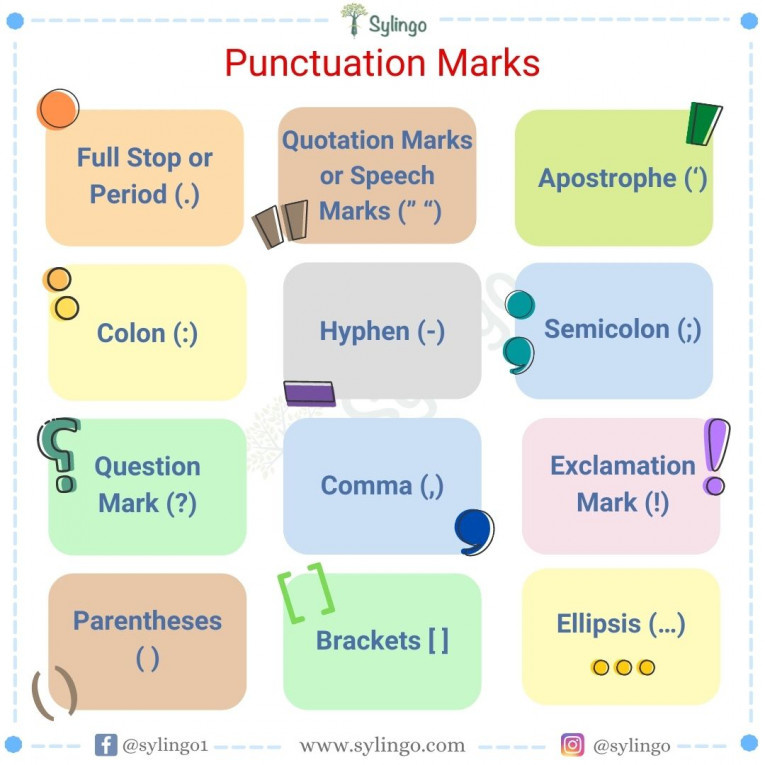Punctuation Marks
Punctuation marks in English serve multiple functions, including:
-
Indicating Sentence Boundaries:
- Punctuation marks such as periods, question marks, and exclamation points help signal the end of sentences.
-
Clarifying Sentence Structure:
- Commas, colons, and semicolons are used to delineate different parts of a sentence, aiding in clarity and organization.
-
Expressing Emphasis or Tone:
- Exclamation points convey excitement or emphasis, while ellipses may suggest trailing off or suspense.
-
Quoting and Parenthetical Elements:
- Quotation marks are used for direct speech, while parentheses provide additional information or clarification.
-
Conveying Relationships:
- Hyphens, en dashes, and em dashes are employed to express relationships between words, such as compound words or ranges.
-
Separating Items in Lists:
- Commas are used to separate items in a list, ensuring each element is distinct.
-
Creating pauses:
- Commas and dashes can introduce pauses within a sentence, influencing its rhythm and flow.
In essence, punctuation marks contribute significantly to the structure, meaning, and interpretation of written English.
2 likes
Published at 2022/07/13





